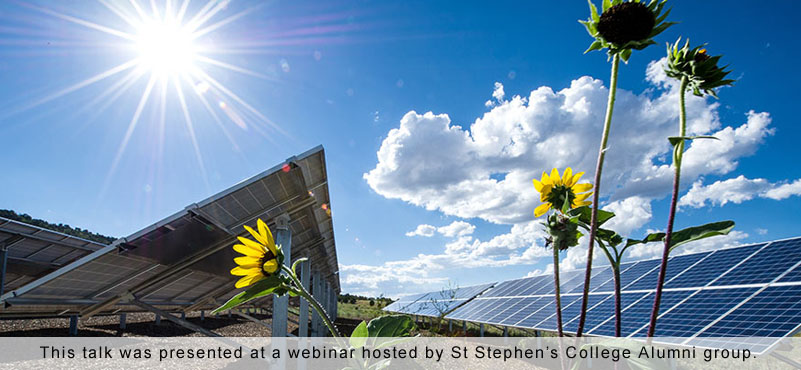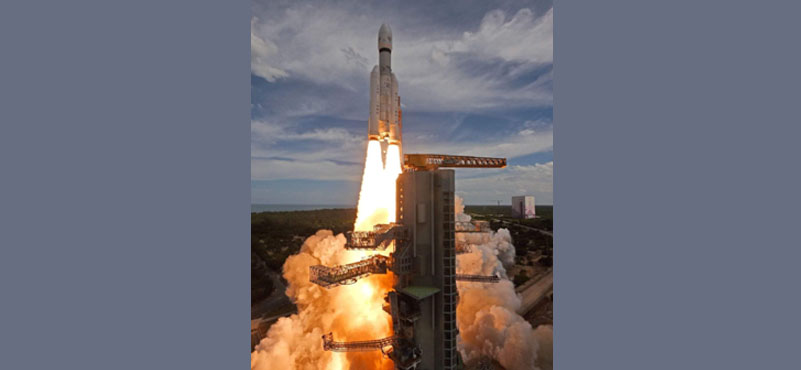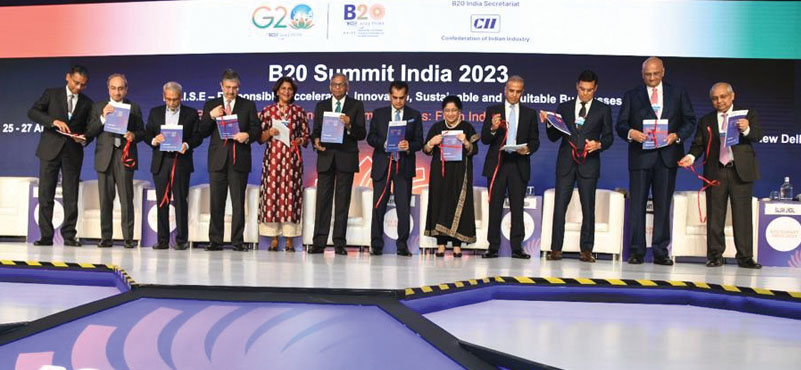Energy versus Climate versus Growth This is perhaps one of the most central questions that we have to answer as a country, but also think about it in terms of us as global citizens and where India fits in, in terms of the broader trajectory that the world takes over the course of this century. This is also one big issue before G20 as they deliberate upon global issues at the 2023 summit in New Delhi.
The sign of a good debate is not that there is silence after one has spoken, but that there are many more who want to jump into the fray. So, I hope that I can stimulate you all with a little bit of provocation and a lot more questions, which I hope we can collectively try to answer. I’ve titled my talk today over the next 15 minutes, “Energy versus Climate versus Growth?”. But I’ve also put a question mark after that because this is perhaps one of the most central questions that we have to answer as a country, but also think about it in terms of us as global citizens and where India fits in in terms of the broader trajectory that the world takes over the course of this century.
Why energy versus climate versus growth and seemingly it’s that last one, growth, that takes priority. And the question for us now is not whether growth should be deprioritized, but can it be reprioritized and realigned and recalibrated in a manner that is also consistent with energy security for us as a country, but also sustainability and integrity of the global climate for planetary sustainability and of course for human wellbeing. So, to frame this debate, I wanted to talk about four tradeoffs, and I wanted to present to you, arguments on either side to then ask ourselves, is there a way to go beyond the tradeoffs?
Dealing with developmental priorities when space is getting restricted
The first trade-off I call is between responding to climate emergencies versus dealing with other developmental priorities when the space is getting restricted.
Let us start with India and then tell you a little bit about what that means for the rest of the world. At CEEW, we’ve been developing a higher resolution climate risk atlas at a district level, and for some states we are going into a sub-district level analysis, and it could be perhaps the first of its kind at that granular level anywhere in the developing world. What we see already is that three quarters of our districts are hotspots for extreme climate events like floods, cyclones and related disasters. But what’s particularly worrying is that about 40% of our districts are showing swapping trends means what was traditionally prone is becoming drought prone or at least getting affected by droughts and vice versa. Which means at the administrative level, the institutional memory that we have of local administrators to deal with one type of challenge might not suffice to deal with the challenges that are coming our way.
But why does this matter beyond just the management of a disaster or the saving of lives on which we have actually done remarkably well over the last two decades with early warning systems, et cetera. Why this matters, is that now the climate crisis is not just a disaster management challenge, it’s a macroeconomic challenge. Across the world we see that while for developed countries, the high-income economies or the upper middle-income economies, the impact of natural disasters over the last two decades, say from the late nineties to the late 2010’s was less than half a percentage of GDP. But for low middle income economies like India or for low-income economies like the least developed countries (LDCs), often that exceeds well over a percentage point in terms of just the direct impact of climate related disaster on their economies when with shocks responsive in the acuteness crisis.
But you also have to figure out for the chronic nature of the crisis and what it does in terms of limiting space that you have to deal with other priorities, education, healthcare, infrastructure and so forth. And this is why India domestically, but also internationally is promoting disaster resilience, this coalition for disaster resilient infrastructure, a new disaster resilience working group that India has promoted to the G20. But of course, as you can imagine, the solutions are not going to be easy.
At the French President’s Finance Summit that was held in Paris in June this year, I was a member of the high-level group of economists advising for that summit. We heard some encouraging sounds such as the IMF putting together a Resilience and Sustainability Trust of 60 billion for that trade off risk. But the one message I want to leave you with regarding that trade-off is that we can’t just limit it to when the crisis occurs, we respond.
Energy access on one hand and investment in clean energy on the other
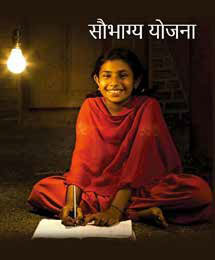 There is this chronic nature that we now have to factor in our macroeconomic planning. So, in the second, and that is between energy access on one hand and investment in clean energy on the other. Now, over the last two decades since 2000, India has given electricity to about 700 million people, many who got electrified during the SAUBHAGYA scheme in recent years. But of course, the work had begun previously as well. Now, while we have to also understand the level of resources, and not just financial, but human and material that was needed to get a wire down to every household. So if you think of the SAUBHAGYA scheme, which ran for about 18 months, 28 million households getting at least a wire, that basically means approximately 11,000 people got access to electricity every hour. This is a crude arithmetic. Compare this to, 700 million people across the world that still need access to electricity by the end of this decade. If the world has to meet the challenge, that would mean that for the remainder of this decade, 11500 human beings have to get access to electricity every single hour.
There is this chronic nature that we now have to factor in our macroeconomic planning. So, in the second, and that is between energy access on one hand and investment in clean energy on the other. Now, over the last two decades since 2000, India has given electricity to about 700 million people, many who got electrified during the SAUBHAGYA scheme in recent years. But of course, the work had begun previously as well. Now, while we have to also understand the level of resources, and not just financial, but human and material that was needed to get a wire down to every household. So if you think of the SAUBHAGYA scheme, which ran for about 18 months, 28 million households getting at least a wire, that basically means approximately 11,000 people got access to electricity every hour. This is a crude arithmetic. Compare this to, 700 million people across the world that still need access to electricity by the end of this decade. If the world has to meet the challenge, that would mean that for the remainder of this decade, 11500 human beings have to get access to electricity every single hour.
So, this is going to be a breathless marathon of one kind that has not been witnessed anywhere before. And this is what developing countries say, look, we’ve got to get power to our people. We’ve got to get clean cooking fuels to our people. That’s the priority. And yet with a shrinking carbon constraint, we also have to make sure that we are investing heavily in cleaner energy infrastructure. So again, if you think about the ambitions that India has put forward, the 500 gigawatt target, of non-fossil electricity capacity. That’s first that in terms of what we’ve achieved over the past since 2010, when the solar mission in India kicked off when we had less than 20 megawatts of solar, we ramped up to nearly 70,000 megawatts solar, over 42,000 megawatts of wind, and with hydro capacity, the nuclear capacity, small hydro, all of that put together, we are now over 185,000 MW of non-fossil installed capacity. This itself has been a remarkable transformation, particularly in the developing world where we demonstrated that a poor economy like India can give electricity access and cooking energy access, but also build renewables at scale. But now, we have to build 11-12 megawatts of clean energy capacity every hour. That’s another marathon. Now, if you look across the world, 88% of all new electric demand, will come emerging economies like India over the next two decades.

So whether it’s countries like China or India moving from coal, whether it’s countries like Egypt or Argentina moving on from gas and so forth, it’s the emerging economies where this action will play out. But as we keep raising the ambition, as we keep deploying capacity, we still have a big challenge, that the finance, the money is still not flowing where the sun shines the most. Despite becoming the fourth largest clean energy market in the world by deployment already, India gets less than 3% of global clean energy investment. All of Africa gets less than that. So, this is a major structural problem we have to solve, and this is another priority of our G20 presidency as well. How do we de-risk in order to be able to get a large volume of capital flowing to emerging markets?
Energy sustainability versus energy security
Let’s also discuss the remaining two trade-offs. The third trade-off is between energy sustainability on one hand that I have been describing and energy security In 1913, more than a hundred years ago that Churchill told that energy security comes from nothing but diversification and diversification alone and countries across the world have sort of followed that mantra. If you look at even a country like ours, which is highly dependent on fossil fuel imports, our fossil fuel imports come from countries as wide ranging as the US, Russia, Iraq, Saudi Arabia, UAE, Nigeria, Kuwait, and so forth. Now, it does raise a question about vulnerability of overdependence on imports, but then let’s look at clean energy imports and our renewable energy and batteries imports. 92% of that comes just from China and Hong Kong. So, on one hand, as we are moving towards energy sustainability, the concentration of that vulnerability in terms of input dependencies has actually increased. And again, this is not just an India story. We’ve seen this across the world. The number of countries with concentrated sources of clean energy imports for solar has gone up from 38 in 2012 to over 70 countries in 2021. And for batteries from 19 in 2012 to 49 in 2021. We have to solve for the past – coal, oil, gas, but even more importantly, for the fuels of the future – renewables, solar, wind, batteries, critical minerals, hydrogen. How do we create that energy security architecture that is consistent with energy sustainability, but also stops giving us headaches and keeps us awake at night.
Job losses versus Jobs Growth
And therefore, finally, the last thing that might keep us up at night is the trade-off between job losses on one hand and jobs growth on the other. And can we create more jobs in the move towards a more sustainable economy? And how do we deal with that? Again, no easy answers. 266 of our districts have at least one asset that is linked to coal. There are at least 13 million people in India formally employed in coal-based industries with informal employment included perhaps 20 million plus. Now, at the same time, we know that solar or renewables creates more jobs per unit of power produce than coal. Distributed renewables like rooftop solar creates eight times more jobs than even utility scale solar. We estimate at CEEW that by the end of this decade, we’ll have a workforce in solar and wind alone of 1 million people, which is equal to full-time equivalent jobs of three and a half million people. In the electric mobility sector, we see a loss of jobs about 1.6 lakhs in the petrol internal combustion engine sector. But we see a growth of jobs about 1.2 lakhs in the electric vehicle sector, but even more that could come with factory recycling, installation of EP charging infrastructure, building of giga factories and so forth. The green hydrogen supply chain could create another 1.9 million jobs and so forth. But again, the big political economy question is, will the jobs come in the same places as where the job losses are? And if not, do we have the political maturity to manage these distributional consequences as the economy at a macroeconomic level moves forward?
So, what I’ve outlined for you, significant amount of progress that India has made over the past two decades in terms of electricity and access over the past decade, it becomes a clean energy deployment or even job creation. But critical trade-offs remain whether in dealing with the fiscal constraints of dealing with climate risks and the chronic nature of that risk of dealing with the core finance for driving this infrastructure build out of dealing with the vulnerability that continue energy security and dealing with political economy of jobs.
My job wasn’t to deliver all the answers, but to stimulate a debate.
ABOUT THE AUTHOR
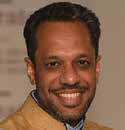 Dr Arunabha Ghosh is an internationally recognised public policy expert, author, columnist, and institution builder. He is the founder-CEO of the Council on Energy, Environment and Water.
Dr Arunabha Ghosh is an internationally recognised public policy expert, author, columnist, and institution builder. He is the founder-CEO of the Council on Energy, Environment and Water.

